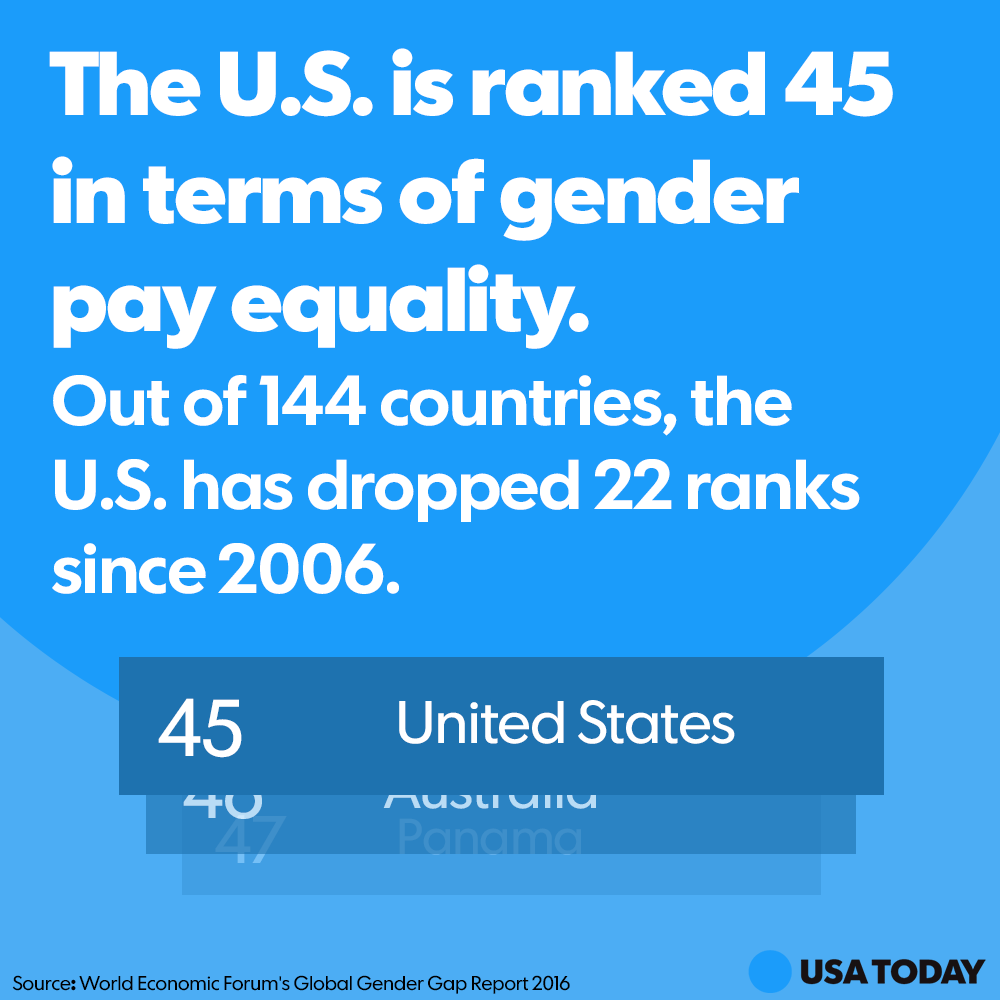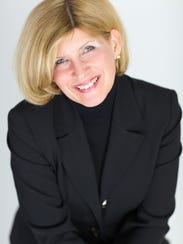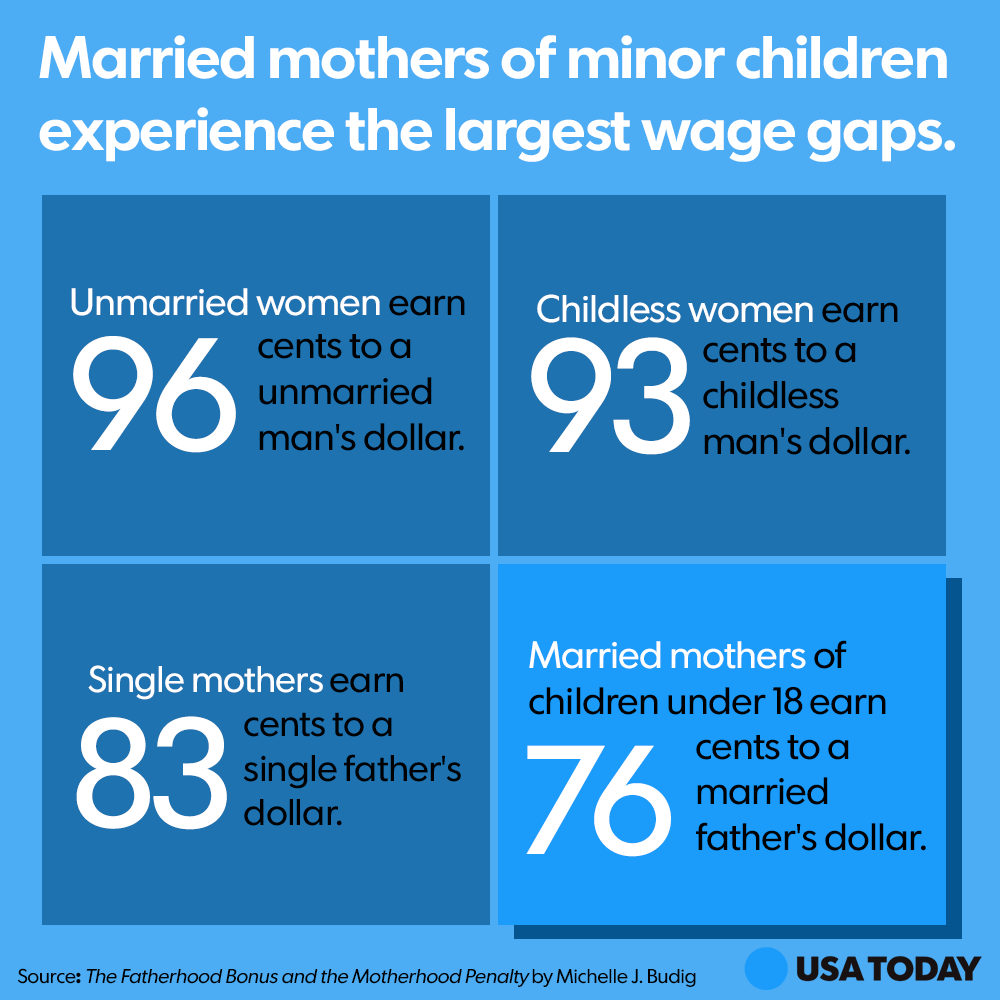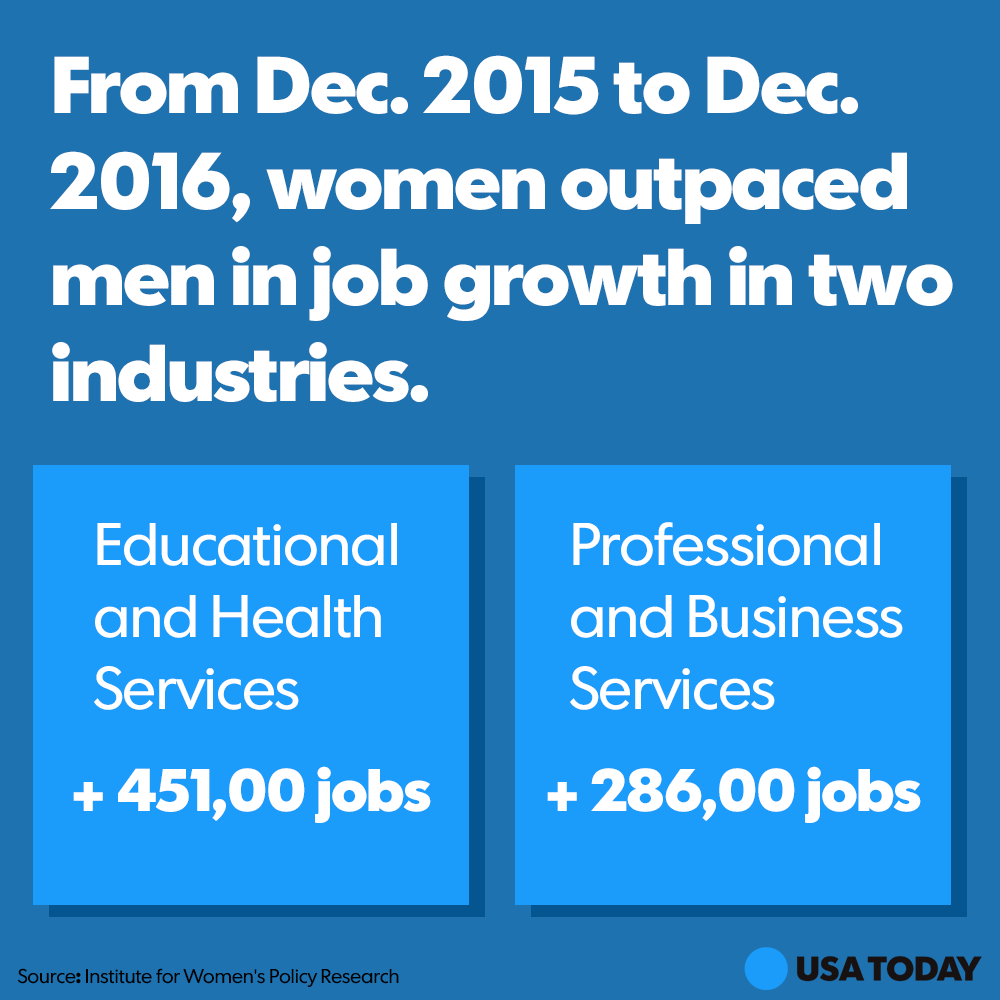
Embed
Share
We asked some of the most powerful women in business today what the future looks like for women in business. Most of them agree on one thing: It will be better. Time

Maxine Williams is Facebook's global director of diversity. (Photo: Jennifer Leahy, for USA TODAY)
SAN FRANCISCO — It's a long road to pay equity.
Despite strides in the 1980s and 1990s, the pay gap between the sexes hasn't budged in more than a decade. That's even with growing research and outcry that's prompted some companies to review — and vow to fix — broad discrepancies in their own workforces.
The numbers are glaring: Women make up half the U.S. college-educated workforce but those with full-time jobs were on average paid 80 cents for every dollar earned by men in nearly every occupation for which there was sufficient earnings data in 2015, according to the non-profit Institute for Women's Policy Research (IWPR).
The gap is especially pronounced when comparing median weekly earnings and far deeper for women of color.

While women overall earned about 82% of the full-time weekly pay check of a man, black women's earnings were just 68% compared to white men and Hispanic women's were 62%, according to IWPR. Asian women fare better compared to white men, but compared to Asian men, they made only 78%.
You have to look hard to find a profession this gap isn't the case. Median earnings for women are lower than men’s in 18 of the 20 most common jobs for women.
"It's been stagnant the last 10 to 15 years even though women are better educated," says Ariane Hegewisch, program director of employment and earnings at IWPR. She calculates that if the current trends continue, women on average will not receive equal pay until 2059.
For women of color, the rate of change is downright glacial — black women will wait until 2124 and Hispanic women will have to wait until 2248, Hegewisch says, compared to 2056 for white women.
Against that bleak backdrop comes the view from a growing number of companies that by failing to recruit, retain and advance women, they're missing out.
Facebook, whose advertising revenues have swelled thanks to growth in small businesses using Facebook Pages to reach customers, says 40% of its pages are women-owned pages. That's a 60% increase from last year.
"You have no idea how you will do as a business unless you connect everybody," says Maxine Williams, Facebook’s global director of diversity. “When you give people opportunity, and lower barriers of entry, business grows at a critical mass.”
Full-scale gender equality could add 11% to 26% to the global GDP by 2025 — a staggering $12 trillion to $28 trillion, according to a McKinsey Global Institute study.

"It's not only the right thing to do, but it's good business," said Danielle Brown, chief diversity officer at Intel.
Primary and secondary school teachers have one of the narrowest gender wage gaps. Kisha Mattox, a third and fourth grade school teacher in the Oakland, Ca. public school system, appreciates the parity.
In her previous career as a human resources specialist, "I noticed a pay disparity'' between men and women, Mattox says. But in her current field, “male and female teachers in public schools get paid the same because we have a union. I think other industries need unions, mainly because women and teenagers are taken advantage of in some professions.’’
Why it's slow
The hurdles, ranging from outright discrimination and low-paying occupations to cultural expectations that still place the burden of child-rearing on women, are steep.

Pamela Sandy is a financial planner in Cleveland. (Photo: Pamela Sandy, for USA TODAY)
Pamela Sandy says a key reason she became a financial planner was her belief that its commission-based structure made it a profession where what you earn is based on how hard you work.
But when she began her career at a large insurance company, she found that her gender remained a roadblock to getting paid the same as her male peers.
“Women within the profession ... often have life balance issues to manage,’’ says Sandy, a Cleveland-based certified financial planner who is also chairwoman of the Financial Planning Association. “I was a mother, for example. You have other things pulling at you, and that can affect your earning power.''

Women in financial management are paid just 65% of their male counterparts, according to IWPR.
So, in 1993, Sandy did what so many other women in her field do to achieve pay equity — she started her own firm.
More companies are starting to address the pay gap straight on.
When Salesforce.com CEO Marc Benioff surveyed a quarterly management meeting in 2015, he abruptly stopped everything. In a room of a couple dozen executives, only a few were women.
"We have a problem," Benioff, a billionaire tech businessman-philanthropist said to Cindy Robbins, executive vice president of global employee success at the enterprise-software company. He vowed to close the pay and promotion gap.
More than a year later, Salesforce says it has achieve equal pay, promotion and opportunity for female employees. "It is the core DNA of our culture," says Robbins, a Hispanic woman who has climbed the corporate ladder at Salesforce over 11 years. To do so, Salesforce adjusted 6% of employee salaries and spent $3 million on the 2015 initiative.
Intel, meanwhile, has reported steady progress as part of a broader diversity and inclusion program initiated in early 2015 to reach what it considers full representation of women and underrepresented minorities in its U.S. workforce by 2020. In late February, the chip-making behemoth said it achieved promotion parity, achieved equal pay for under-represented minorities and maintained gender pay parity in 2016, according to its annual diversity report.
Executives are just starting to acknowledge broad differences in compensation that fall along gender lines.

Elizabeth Ames, of the Anita Borg Institute. (Photo: 032023000461)
"There is a pay gap, and there is a promotion gap," says Elizabeth Ames, senior vice president of marketing, alliances and programs at Anita Borg Institute. "Women have a harder time being advanced. Many are consistently well-reviewed but not promoted. Their attitude is, 'If I do my job well, I will be recognized.'"
This is illustrated in the absence of women on boards (68%) and in C-suite-level jobs (53%) at tech and healthcare companies in the U.S., the UK and China, according to a Silicon Valley Bank report.
What is more, between 2013 and 2015, the number of new female entrepreneurs in Silicon Valley declined from 46% to 42%, according to the Silicon Valley Competitiveness and Innovation Project.
Indeed, it took a national campaign from civil rights leader Jesse Jackson, and the resulting press coverage, to shine a Klieg light on the tech industry's decades-long desultory record on diversity — an oversight that has left many women in the field skeptical despite recent gains.
A survey of 550 female tech workers worldwide, released in early March by non-profit global technology association ISACA, revealed grave concerns about a lack of mentors (48%), absence of female role models in the field (42%) and gender bias in the workplace (39%).
Lopsided progress
There are some encouraging signs.
In three out of the four quarters last year, women outpaced men in job growth. From December 2015 to December 2016, women topped men in educational and health services (451,000 jobs), and in professional and business services (286,000), according to IWPR.

But the success was lopsided. Single, childless women with college degrees in urban areas were the main beneficiaries, routinely out-earning men, Hegewisch says.
More companies are adopting diversity programs, possibly a sign of changes to come. There’s been a 40% increase in U.S. hires with diversity job titles over the past eight years, according to a LinkedIn survey released in early March.
"We believe diversity will be one of the trends defining the future of hiring," says Nicole Isaac, head of U.S. public policy at LinkedIn. Tech, education, non-profits, health care and pharmaceuticals are leaders in that trend.
Consider the case of domain-name registrar GoDaddy, whom many associate with racy TV ads of scantily-clad women.
But the Scottsdale, Ariz.-based company dropped that practice, and has emerged as a positive story, the Borg Institute's Ames says.
Paying and promoting women equally was the right thing to do — culturally and business-wise — at GoDaddy, which works primarily with small businesses, most of which are owned by women, says company CEO Blake Irving.
"It's been our focus for the last three to four years," Irving says. "To move the needle significantly, it takes time."
In that time, GoDaddy established a workforce in which its female tech and non-tech workers are now paid a penny more an hour than males. Pay is roughly equal among executives. Last year, Clayman Institute was hired to audit its promotion process, which improved 7% for women from the previous year, he says.
"We need to escape the pay-it-backward model, where women take their lower-pay to the next job, perpetuating salary disparity," Irving says.
Follow USA TODAY San Francisco Bureau Chief Jon Swartz @jswartz on Twitter.
Không có nhận xét nào:
Đăng nhận xét